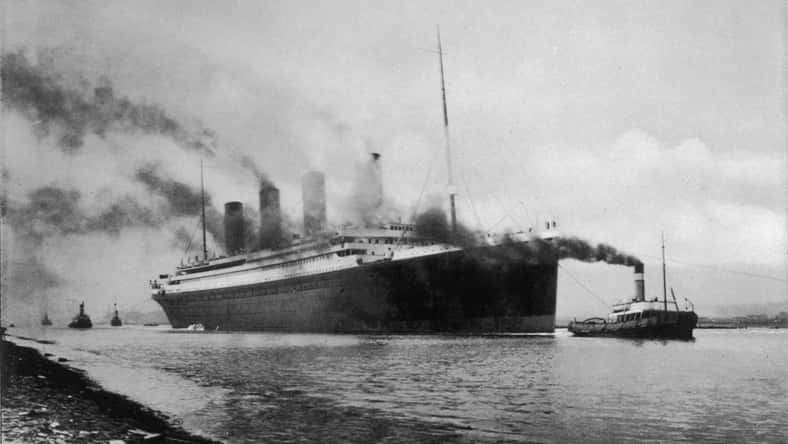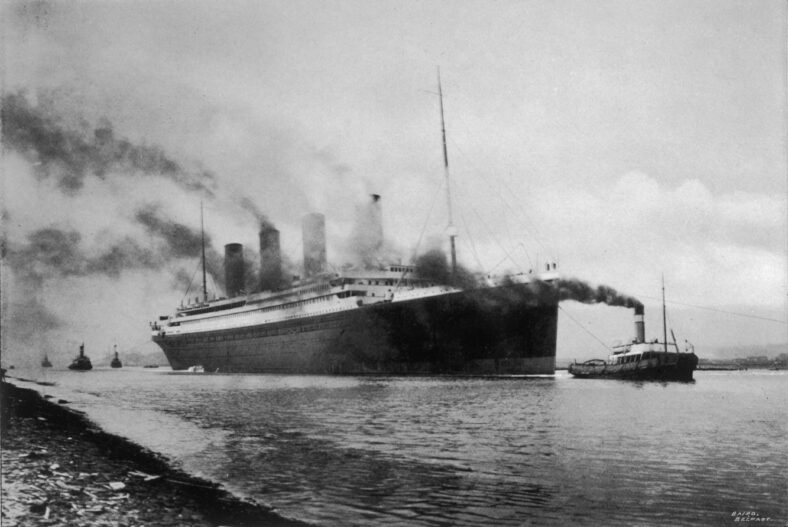A Letter From A Man Who Survived The Titanic Sold For Close To $400,000

A first-class passenger named Archibald Gracie boarded the Titanic in Southampton on April 10, 1912. As crew members prepared the ship to set sail across the Atlantic, Gracie settled into his cabin and jotted a letter to a friend. He wrote, “It is a fine ship, but I shall await my journey’s end before I pass judgment on her.”
Just a few days later, the vessel crashed into an iceberg and sank, taking 1,500 passengers and crew members with it. Gracie lived to tell the tale, writing a book about the experience.
Now, the letter that he wrote while onboard the Titanic has sold on April 26 for roughly $399,000 during an auction held by Henry Aldridge and Son in Wiltshire, England.
“The stories of those men, women, and children are told through the memorabilia, and their memories are kept alive through those items,” said auctioneer Andrew Aldridge.
The identity of the buyer has remained anonymous. The seller, A.P. Brooks, was a descendant of the letter’s recipient.
According to the lot listing, Brooks was a European ambassador who received the letter at the Waldorf Hotel in London.
The letter was postmarked on April 11 in Queenstown, Ireland, which is now known as Cobh. It was one of the two stops the ship made before it sank. The letter was postmarked again on April 12 in London.
The stationery boasts the logo of the White Star Line, the company that owned the Titanic. Next to the logo, there were the words, “On board RMS Titanic.”
Gracie is one of the most famous survivors of the Titanic. He was born in January 1858 in Mobile, Alabama. He attended elementary school in New Hampshire and later enrolled at the United States Military Academy at West Point, although he never graduated from there. He enlisted in the army instead.

Sign up for Chip Chick’s newsletter and get stories like this delivered to your inbox.
Eventually, he became a colonel in the Seventh New York Regiment. He had just finished writing a book about a Civil War battle when he decided to board the Oceanic on a trip to Europe. For his return trip to America, he booked passage on the Titanic instead of sailing on the same vessel again.
On the Titanic, Gracie spent his time chaperoning unaccompanied women, reading books in the first-class library, swimming in the ship’s pool, playing squash on the courts, and chatting about the Civil War with another passenger. He went to bed early on April 14 but woke up around 11:40 p.m.
Once he realized the ship’s engines had stopped running, he left his room to find out what was happening. When he felt the ship listing, he returned to grab his life jacket and escorted the women he had been chaperoning to the boat deck, where they were loaded onto lifeboats. He also helped get other women and children into the remaining lifeboats.
When all the lifeboats were filled up, he helped the crew retrieve several collapsible lifeboats. The ship began to sink soon after, and Gracie was pulled underwater. He managed to surface and climb onto an overturned collapsible lifeboat, along with a few dozen other men.
He spent the cold, dark night on top of the lifeboat. According to Gracie, many of the men on the vessel did not survive the evening. In the morning, Gracie and the other survivors were rescued.
However, his health had declined after the ordeal. He had diabetes and suffered from hypothermia during that fateful night. He died eight months later on December 4, 1912.
More About:News





